        |
Ridgewood Water WorksThe Ridgewood Water Works, or pumping station, first opened in 1860 and served to drive all the water collected from various sources up to the Ridgewood Reservoir, which acted as a distributing reservoir to the rest of Brooklyn. The water was driven up through a 'force tube', which ran along a path that was to become 'Force Tube Avenue'. The role was significant; this setup provided about 90% of Brooklyn's water for both private citizens and commercial use. In this day and age business used steam engines and boilers, and water was a critical element. The rapid growth of the city led to many dire predictions of shortages, and a lot of investments were made in the station, first to add pumps, then a major overhaul to increase capacity, in a race to keep up with demand. Eventually New York City's plan to tap the Catskills made the system obsolete. It served as an emergency backup for years, but was eventually shut down, and in the 1960s the city decided to tear it down for park space. |
||
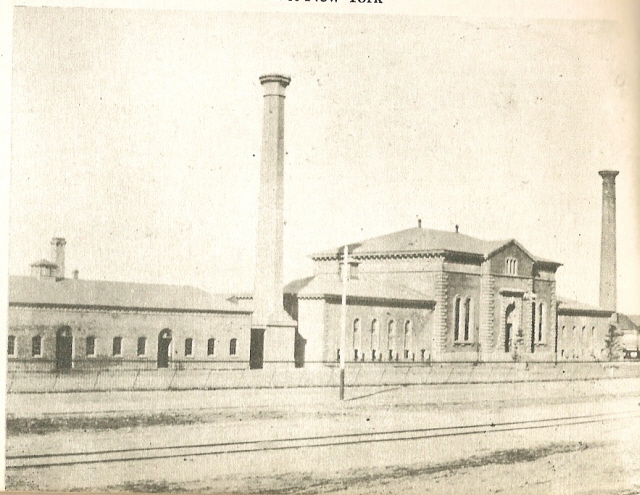
|
Ridgewood Pumping Station, circa 1870 This is the original structure; note the chimney stacks. The west side chimney was added in 1869, giving us a clue to the date of the photo. The name of course ties to the reservoir, which was originally associated with the Ridgewood area. At the time of construction in 1858, it was state of the art. It could pump 10 million gallons of water every 24 hours. One catch- those chimney stacks? They were needed to disperse the remains of the 30,000 pounds of coal needed to run the boilers. That was to be a continuous issue. | |
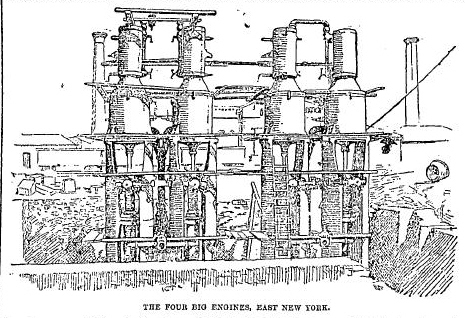
|
Engines, Ridgewood Water Works 1890 It became quickly clear that capacity of the system would need to be increased, and in 1888 a bill was signed to invest $1.3 million dollars to acquire the land and develop additional reservoir and pumping capacity. The September 14, 1890 edition of the Brooklyn Eagle featured numerous drawings of the progress and this image is one sample, showing the new engines. |
|
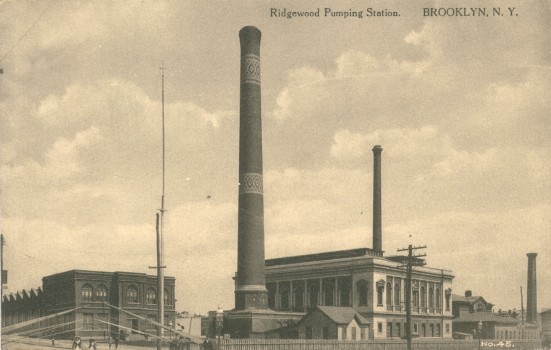
|
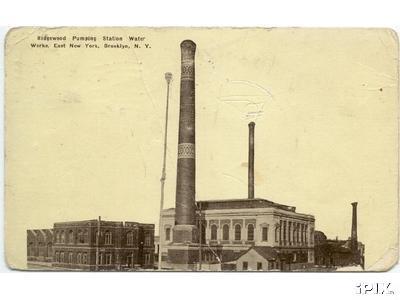
|
Ridgewood Pumping Station, Brooklyn Dated: 1915 Maker: Unk Status: Own (BG) Ridgewood Pumping Station Water Works Dated: 1907 Maker: Unk Status: Need In 1882 a 4th pump and boilers necessitated the building of a wing to the southeast of the original building. The old station can be seen on the right. |
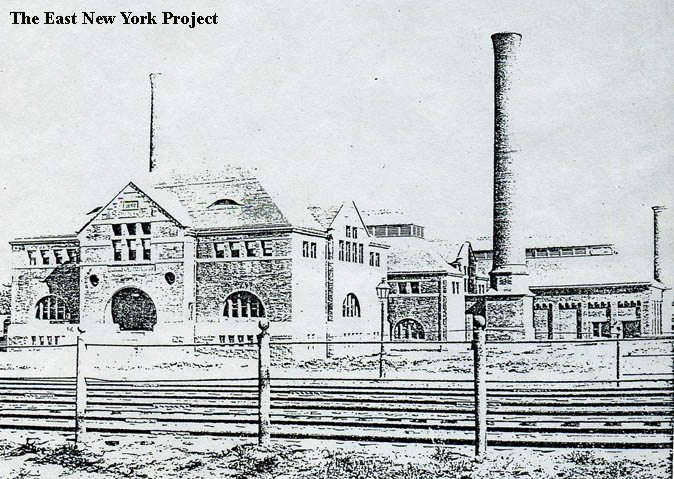
|
New Pumping Station, 1891 The work in 1890 added a new pumping station to the south side. Ironically one of the problems encountered when laying the foundations for the new station was that there was too much groundwater! They had to build wells first to divert the groundwater and these wells could have added 5 million extra gallons of water to the supply, but proved to be too impractical to draw upon. This station was cleared in the 1940s to make way for Conduit Boulevard construction and the new East New York Vocational High School. Thanks to Ellen Poulsen for this image and sharing her material on the Water Works. |
|
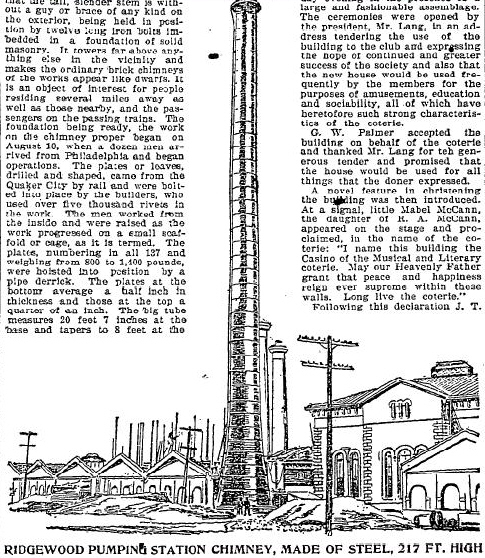
|
Chimney, Ridgewood Water Works 1896 In 1896, the station added a steel 217 foot chimney, considered a marvel at that time. The engineer himself, with an assistant, had to paint the chimney because they couldn't find a regular painter willing to work in a sling 200 feet above the ground! The taller chimney was meant to carry off the fumes from all that coal burning, but it just meant the soot traveled a little further before reaching the ground. Source: November 29, 1896 Brooklyn Eagle. June 20, 1902 article discussing coal pollution from the pumping station. |
|
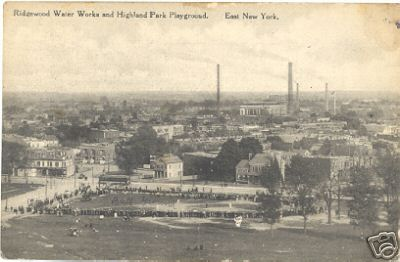
|
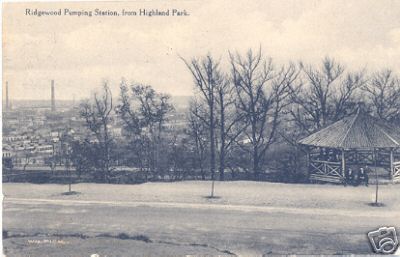
|
Ridgewood Water Works and Highland Park Playground Dated: 1915 Maker: Unk Status: Need Ridgewood Pumping Station, from Highland Park Dated: 1910 Maker: Wm. Fick Status: Own(BG) The smokestacks were of course familiar landmarks and appear in a number of postcards. The brick chimneys were 175 feet high. |
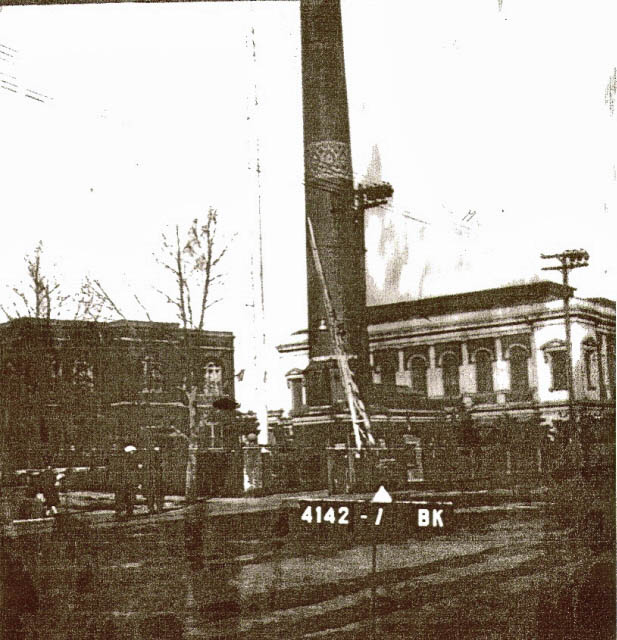
|
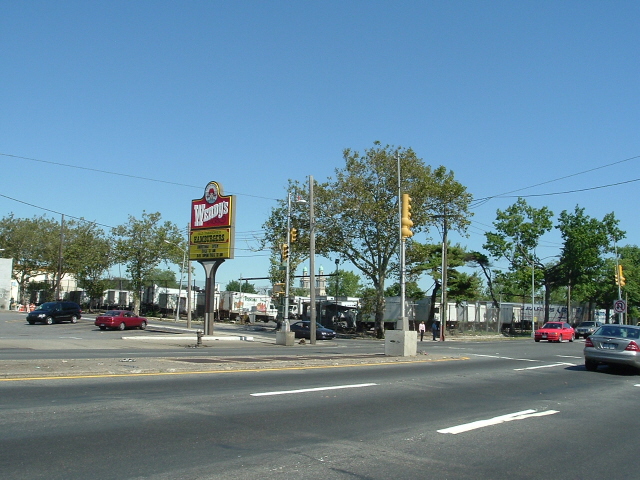
|
Ridgewood Pumping Station, Brooklyn Neil deserves a double thanks, for tracking down the 1939 tax photo on the left and the 2005 shot of Logan and Atlantic. When it was finally torn down, my brother attended a ceremony with his P.S. 108 classmates to see Mayor Lindsay at the site officially declare the land would be cleared for a park. Yvonne Temann tipped me off that the city also considered the location for a school but the company using the lot for truck parking threatened to pull the business. eventually P.S. 5 was built on the site of the old Cypress Pool.  |
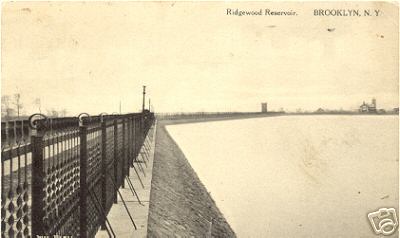
|
Ridgewood Reservoir This is a reminder we have a separate page devoted to the reservoir, located here. The history of the two are of course tied closely together. | |